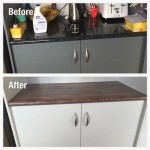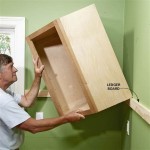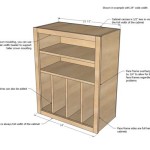Essential Aspects of What Is the Best Thing to Clean Kitchen Cabinets
Determining the most effective cleaning solution for kitchen cabinets is essential in preserving their longevity and aesthetics. Several crucial aspects should be considered to ensure proper cleaning and maintenance. This article explores the key elements to consider when choosing the optimal cleaning method for kitchen cabinets, offering valuable insights into this often-overlooked aspect of kitchen upkeep.
The following paragraphs delve into the specific details of these essential aspects, providing a comprehensive understanding of the factors that contribute to the best cleaning practices for kitchen cabinets. From the type of dirt and grime that accumulates to the compatibility of cleaning agents with different cabinet finishes, this article covers all the crucial considerations to help you make informed decisions about the care and maintenance of your kitchen cabinets, ensuring they remain a gleaming centerpiece of your kitchen for years to come.
Type of Dirt and Grime
The type of dirt and grime that accumulates on kitchen cabinets plays a significant role in determining the most effective cleaning solution. Everyday cooking activities can result in a buildup of grease, food particles, and dust, requiring different cleaning methods to remove each type effectively. Understanding the nature of the dirt and grime present on your cabinets will help you choose the cleaning agent best suited to break down and remove it.
Cabinet Finish
Kitchen cabinets come in a variety of finishes, from painted to stained wood, laminate, and thermofoil. Each finish has specific cleaning requirements to avoid damage or discoloration. Harsh cleaning agents or abrasive materials can scratch or damage delicate finishes, so choosing a cleaning solution compatible with your cabinet finish is essential for maintaining their appearance and longevity.
Cleaning Frequency
The frequency with which you clean your kitchen cabinets should be based on the usage and dirt accumulation. Regular cleaning helps prevent the buildup of dirt and grime and makes the cleaning process easier. For heavily used cabinets, weekly cleaning may be necessary, while less frequently used cabinets may require cleaning every few weeks or even monthly.
DIY vs. Professional Cleaning
Depending on the extent of the dirt and grime on your kitchen cabinets, you may opt for DIY cleaning or consider hiring a professional cleaning service. DIY cleaning can be effective for routine maintenance, while professional cleaning is recommended for deep cleaning or cabinets with stubborn stains or grease buildup. Professional cleaners have access to specialized equipment and cleaning solutions that can effectively remove tough stains and restore the appearance of your cabinets.
Conclusion
Understanding the best way to clean kitchen cabinets involves considering various essential aspects. From the type of dirt and grime to the cabinet finish, cleaning frequency, and DIY versus professional cleaning, these factors play a crucial role in determining the most effective cleaning methods. By incorporating these considerations into your cleaning routine, you can effectively maintain and protect your kitchen cabinets, ensuring they continue to enhance the beauty and functionality of your kitchen for years to come.

How To Clean White Kitchen Cabinets 3 Best Ways Avoid Abbotts At Home

3 Super Easy Ways To Clean White Kitchen Cabinets And Avoid

How To Clean Kitchen Cabinets 9 Basics Bob Vila

How To Clean White Kitchen Cabinets 3 Best Ways Avoid Abbotts At Home
:max_bytes(150000):strip_icc()/ways-to-clean-wood-kitchen-cabinets-3017289-01-765f893e7cca49a1ab72d7c49efdf518.jpg?strip=all)
Tips For Cleaning Food Grease From Wood Cabinets

We Tried 5 Methods To Clean Greasy Wood Cabinets And The Winner Is Ridiculously Effective Kitchn Cleaning Kitchen

How To Clean Kitchen Cabinets Everyday Skate

The Best Way To Clean Kitchen Cabinets And What Not Do Dailey Manufacturing Co

The Best Way To Clean Kitchen Cabinets Angie Holden Country Chic Cottage

How To Clean White Kitchen Cabinets 3 Best Ways Avoid Abbotts At Home
Related Posts








